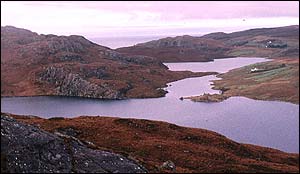A geologist at the University of St. Andrews in Scotland, Dr. Tony Prive says that films of bacteria, also known as biocrust, were discovered in front of an ancient sandy area

Life settled on land over a billion years ago, much earlier than previously thought. A geologist at the University of St. Andrews in Scotland, Dr. Tony Prive says that films of bacteria, also known as biocrust, were discovered in front of an ancient sandy area.
The rocks that bear the evidence of the biocrust are in the Torridon area of north-west Scotland, which contains respectively billion-year-old rocks and 543-million-year-old rocks. The grains of sand seem to have held together thanks to the bacterial film. "This may be the oldest direct evidence of life on land," Dr Prive told the BBC website.
About a billion years ago, the earth went through a series of cataclysmic changes. The composition of the atmosphere changed from time to time, the climate conditions moved from extreme to extreme.
Primitive life was already on the earth in the form of single-celled creatures as well as bacteria that filled all the oceans that then covered most of the planet's surface. However, scientists believed until now that the land was not inhabited until a few hundred million years ago. The picture may now change, if indeed it is proven that these are fossils of material created by bacteria.
